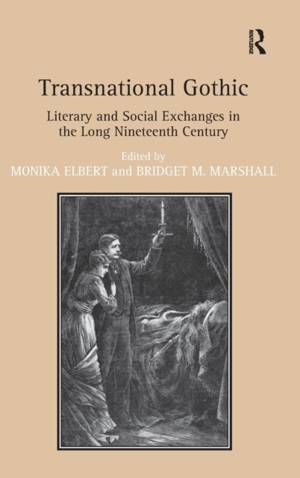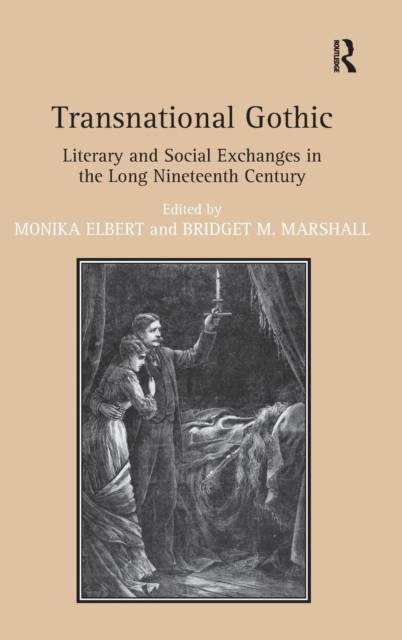
Bedankt voor het vertrouwen het afgelopen jaar! Om jou te bedanken bieden we GRATIS verzending aan op alles gedurende de hele maand januari.
- Afhalen na 1 uur in een winkel met voorraad
- Gratis thuislevering in België
- Ruim aanbod met 7 miljoen producten
Bedankt voor het vertrouwen het afgelopen jaar! Om jou te bedanken bieden we GRATIS verzending aan op alles gedurende de hele maand januari.
- Afhalen na 1 uur in een winkel met voorraad
- Gratis thuislevering in België
- Ruim aanbod met 7 miljoen producten
Zoeken
Transnational Gothic
Literary and Social Exchanges in the Long Nineteenth Century
Monika Elbert
Hardcover | Engels
€ 195,95
+ 391 punten
Uitvoering
Omschrijving
Offering a variety of critical approaches to late eighteenth- and nineteenth-century Gothic literature, this collection provides a transnational view of the emergence and flowering of the Gothic. The essays expand on now well-known approaches to the Gothic (such as those that concentrate exclusively on race, gender, or nation) by focusing on international issues: religious traditions, social reform, economic and financial pitfalls, manifest destiny and expansion, changing concepts of nationhood, and destabilizing moments of empire-building. By examining a wide array of Gothic texts, including novels, drama, and poetry, the contributors present the Gothic not as a peripheral, marginal genre, but as a central mode of literary exchange in an ever-expanding global context. Thus the traditional conventions of the Gothic, such as those associated with Ann Radcliffe and Monk Lewis, are read alongside unexpected Gothic formulations and lesser-known Gothic authors and texts. These include Mary Rowlandson and Bram Stoker, Frances and Anthony Trollope, Louisa May Alcott, Elizabeth Gaskell, Theodore Dreiser, Rudyard Kipling, and Lafcadio Hearn, as well as the actors Edmund Kean and George Frederick Cooke. Individually and collectively, the essays provide a much-needed perspective that eschews national borders in order to explore the central role that global (and particularly transatlantic) exchange played in the development of the Gothic. British, American, Continental, Caribbean, and Asian Gothic are represented in this collection, which seeks to deepen our understanding of the Gothic as not merely a national but a global aesthetic.
Specificaties
Betrokkenen
- Auteur(s):
- Uitgeverij:
Inhoud
- Aantal bladzijden:
- 282
- Taal:
- Engels
Eigenschappen
- Productcode (EAN):
- 9781409447702
- Verschijningsdatum:
- 2/01/2013
- Uitvoering:
- Hardcover
- Formaat:
- Genaaid
- Afmetingen:
- 156 mm x 234 mm
- Gewicht:
- 580 g

Alleen bij Standaard Boekhandel
+ 391 punten op je klantenkaart van Standaard Boekhandel
Beoordelingen
We publiceren alleen reviews die voldoen aan de voorwaarden voor reviews. Bekijk onze voorwaarden voor reviews.












